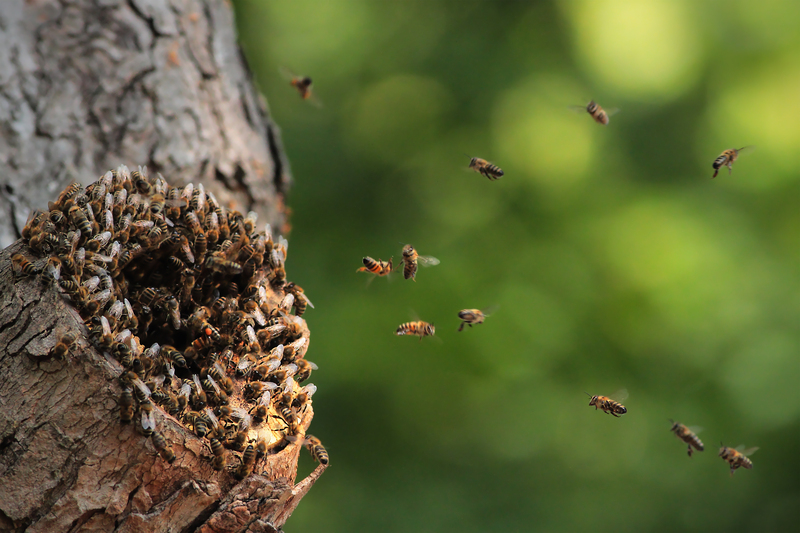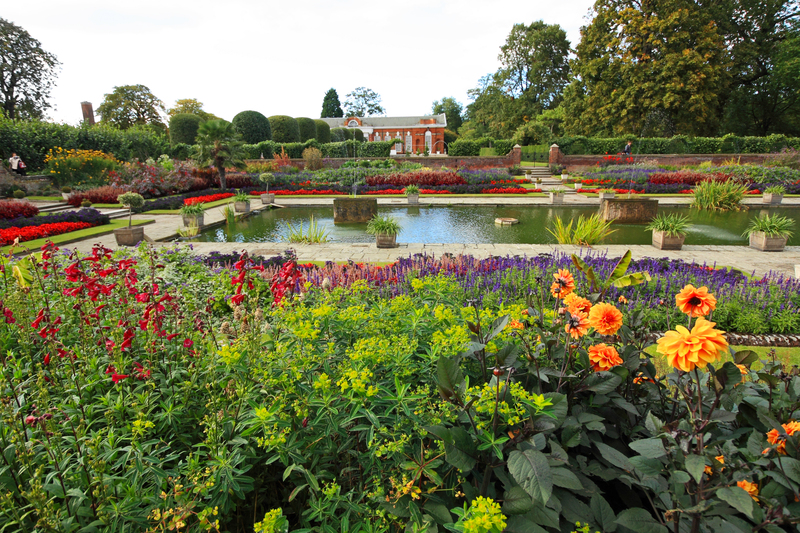The Surprising Role of Gardening in Climate Action
Posted on 10/06/2025
The Surprising Role of Gardening in Climate Action
In the era of climate anxiety and ecological crises, daily practices that can make a real difference are often overlooked. Among these, gardening--an age-old hobby for many--now steps into the limelight as a powerful tool for climate action. But what exactly is the connection between gardening and climate change? And how can backyard gardens or urban green spaces become a weapon in the fight against global warming? This article delves into the myriad ways gardening supports climate action, bringing together science-backed insights, expert opinions, and actionable tips for eco-conscious readers.

How Gardening Impacts the Environment
When we discuss climate change mitigation, large-scale policies and initiatives often take center stage. However, transforming small-scale personal efforts like gardening into climate action strategies can lead to significant benefits. Here's how gardening contributes to the fight against climate change:
1. Carbon Sequestration in Your Backyard
Plants act as natural carbon sinks, absorbing carbon dioxide (CO2) from the atmosphere during photosynthesis. The more plants you grow--be it vegetables, flowers, shrubs, or trees--the more CO2 they remove from the air. Over time, much of this carbon is stored in plant tissues and soil, reducing atmospheric greenhouse gases.
- Trees and shrubs store large amounts of carbon due to their extensive root systems and woody stems.
- Soil health is improved with composting and mulching, which increases organic matter and enhances the soil's ability to lock away carbon.
- Permaculture practices--like no-dig gardening--minimize soil disturbance, maximizing carbon storage in the earth.
2. Gardening Reduces Urban Heat Islands
Urban gardening and green roofs are increasingly being recognized for their role in cooling cities. Hard, paved surfaces absorb and radiate heat, raising local temperatures. In contrast, gardens provide natural shade and release moisture, resulting in cooler microclimates. This cooling effect:
- Reduces the need for energy-intensive air conditioning.
- Lowers summertime city temperatures by several degrees.
- Mitigates the impact of heat waves, which are increasing due to climate change.
3. Gardening Promotes Biodiversity
Biodiversity loss is closely linked to climate change. By cultivating a garden rich in native plants, homeowners provide vital habitats for pollinators such as bees, butterflies, and birds. A thriving ecosystem in a backyard garden supports the intricate web of life, enhancing nature's resilience to climate disruptions.
- Planting diverse species attracts beneficial insects that act as natural pest controllers, reducing the need for chemical pesticides.
- Native plants are better adapted to local climates, requiring less water and care.
- Supporting pollinators aids in global food security, which is threatened by extreme weather and habitat loss.
Gardening as a Pathway to Sustainable Living
Beyond its ecological impacts, gardening fosters a sustainable mindset that ripples throughout daily life. Let's explore some of these transformative benefits:
4. Homegrown Food Reduces Carbon Footprint
The industrial food system is a significant greenhouse gas emitter, responsible for transportation, packaging, refrigeration, and storage. By cultivating fruits, vegetables, and herbs at home, you:
- Cut down on food miles and fossil fuel consumption.
- Reduce reliance on single-use plastics and packaging.
- Ensure fresher, healthier produce free from harmful chemicals.
- Decrease food waste by harvesting only what you need.
5. Composting Turns Waste into Climate Solutions
Composting is an underrated but crucial aspect of climate-friendly gardening. Food scraps and yard waste that end up in landfills release methane--a potent greenhouse gas. By composting organic matter, you not only create nutrient-rich soil enhancer but also:
- Lower methane emissions from decomposing landfill waste.
- Improve soil structure and water retention in your garden.
- Encourage the growth of beneficial microbes that boost plant health.
In turn, healthier plants and soils lead to enhanced carbon sequestration and climate resilience.
6. Water-wise Gardening Conserves Precious Resources
Climate change is resulting in erratic rainfall patterns and droughts. By adopting water-efficient gardening practices, such as mulching, drip irrigation, and rainwater harvesting, gardeners use resources wisely while supporting stable plant growth. Incorporating drought-tolerant and native species further reduces the demand for supplemental watering.
Empowering Communities Through Urban Gardening
Gardening is no longer a solitary endeavor. Community gardens, schoolyard plots, and rooftop farms are blossoming in cities worldwide as tools for both urban renewal and climate action. Consider these key impacts of community-based gardening:
- Educating the public about environmental stewardship, food systems, and sustainable practices.
- Building local food resilience in the face of supply chain disruptions intensified by climate change.
- Greening underutilized urban areas to improve air quality and support biodiversity.
- Strengthening community bonds, which is essential for collective action on climate policies.
The Science Behind Gardening and Climate Action
Soil Carbon Storage: The Hidden Ally
Healthy soils play a pivotal role in the land-based carbon cycle. Gardens managed with organic methods can increase soil organic carbon (SOC) via the addition of compost, crop residues, and cover crops. Multiple studies link organic-rich soils to:
- Decreased runoff and erosion.
- Improved drought resistance.
- Higher garden productivity and reduced fertilizer needs.
Furthermore, biochar amendments--a form of charcoal made from plant material--show promise for long-term carbon storage in home and community gardens.
Reducing Reliance on Chemical Inputs
Chemical fertilizers and pesticides are fossil-fuel intensive to produce and contribute to nitrous oxide emissions, a powerful greenhouse gas. By transitioning to organic gardening methods and practicing integrated pest management, gardeners can dramatically minimize their environmental impact.
Wildlife Corridors and Urban Green Infrastructure
Strategically placed gardens act as wildlife corridors, allowing animals and pollinators to move safely between green spaces. On a larger scale, interconnected gardens and landscaped parks form part of urban green infrastructure--a nature-based approach to climate adaptation that:
- Makes cities more resilient to extreme rainfall and flooding.
- Filters air pollutants, contributing to public health.
- Reduces noise and increases recreational spaces, boosting overall quality of life.
Taking Action: How to Make Your Garden More Climate-Friendly
Inspired to contribute to climate action through gardening? Here's a comprehensive guide to get started:
1. Grow More Perennials and Native Species
Perennials (plants that live for several years) typically require fewer resources than annuals, while native plants are adapted to local conditions, resulting in resilient, low-maintenance gardens.
2. Practice No-Dig or Low-Till Gardening
Minimizing soil disturbance preserves underground carbon stores and fosters a vibrant soil ecosystem.
3. Compost All Garden and Kitchen Waste
Keeping organic matter out of landfills reduces methane production and builds healthier, carbon-rich soils.
4. Mulch and Cover Bare Soil
Mulching conserves moisture, suppresses weeds, buffers soil temperature, and locks in carbon.
5. Use Water Efficiently
Install drip irrigation, use rain barrels, and avoid watering during the hottest part of the day to use water wisely.
6. Encourage Pollinator-Friendly Practices
Grow a variety of flowers, avoid pesticides, and provide nesting sites for bees and butterflies.
Gardening: A Growing Force for Climate Action
Every garden, no matter how small, plays a role in addressing climate change. From carbon sequestration and biodiversity enhancement to community building and urban resilience, the ripple effects are profound. Whether you have a sprawling yard, a balcony planter, or access to a community garden, your efforts matter.
By embracing climate-smart gardening practices, families and communities worldwide can contribute to a healthier planet--one plot at a time. With growing recognition of the link between gardening and climate action, now is the perfect time to pick up a shovel and join the green revolution. Your garden can be more than just a beautiful space; it can be part of the solution to the climate crisis.

Frequently Asked Questions: Gardening and Climate Change
-
How does gardening help fight climate change?
Gardening helps by capturing carbon dioxide, supporting biodiversity, and reducing reliance on carbon-intensive food systems. Eco-friendly garden practices further enhance these benefits. -
What are the best plants for climate action gardening?
Native perennials, deep-rooted trees, and pollinator-friendly flowers are excellent choices. They store more carbon and support local ecosystems. -
Can I make a difference in the climate with a small garden or balcony?
Absolutely! Every green space, no matter the size, contributes to carbon capture, biodiversity, and urban cooling. -
What is the role of community gardens in climate resilience?
Community gardens enhance local food security, provide educational resources, and turn underutilized spaces into climate buffers.
Conclusion: Growing Hope in the Face of Climate Change
Climate action doesn't always have to mean big, institutional solutions. Sometimes, the journey to a cooler, greener future begins with a simple seed, a handful of compost, and a determination to make a difference. Start gardening for the planet today--and witness the surprising, powerful role your green thumb can play in combating climate change.

